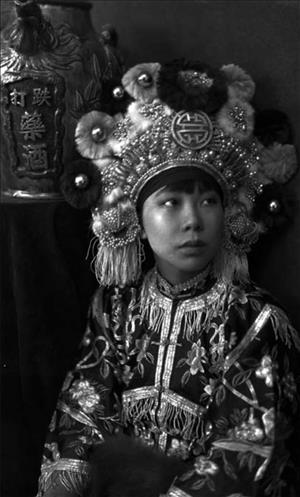Chinese immigrants played a critical role in the development of Washington Territory and of Seattle. By 1880, more than 3,000 Chinese lived in Washington Territory. They helped to build Western railroads and provided labor for many of the region's major industries.
A Pioneering Work Force
In the decades before statehood, the development of land and industry was a prodigious undertaking, requiring much more labor than could be supplied by the stream of pioneers migrating along the Oregon Trail from the American Midwest and East Coast. The low-paid, hard-working Chinese seemed the perfect solution. However, it was the discovery of gold in rivers in Oregon, Washington, and British Columbia that first lured a few hundred Chinese to the Northwest in the late 1850s. Hoping to reach "Gold Mountain," they had flocked to California a few years earlier. Most were from the famine-stricken area of Guangdung (Kwangtung) Province in southeast China near the port city of Guangzhou. Contract workers and merchants followed miners to the Northwest, many of them shipped from California where the railroads were near completion and an anti-Chinese mood prevailed. By 1880, there were 3,176 Chinese in the territory, about 4 percent of the total population. They were among 300,000 Chinese in the entire United States.
From Cook to Coal Miner
Chinese settled in the growing cities of Seattle and Tacoma, working as cooks, domestic servants, and laundry men. Chinese labor contractors set up headquarters and recruited Chinese workers for work sites on Puget Sound and farther afield – lumber mills in Kitsap County, canneries, railroads, hop farms, coal mines, and road construction projects.
In Seattle, a gang of Chinese workers dug the first canal connecting Lake Union with Lake Washington. Chinese sold vegetables grown in gardens near what is now the Seattle Center and in other gardens on the Duwamish River. There was also a handful of professionals, including doctors, priests, editors, and students.
Chinatown
Ethnic enclaves helped reinforce cultural and kinship ties, and provided a sense of security from an often hostile white majority. The Chinese didn't have much choice; restrictive covenants by real estate agents and homeowners prevented Chinese and other Asians from living elsewhere. In Seattle, the original Chinese quarter was located in Pioneer Square near 2nd Avenue and Washington Street. In the 1910s, Chinatown moved east to its current location in the International District, where enterprising Chinese established food and import-export businesses, restaurants, laundries, hotels, and numerous other businesses. There were also Chinese family associations, churches, language schools, and gambling halls.
Chinese Exclusion
As in California, Chinese faced discriminatory measures such as special taxes, and prohibitions against marrying whites and owning land. In 1882, for the first time in American history, the national Chinese Exclusion Act aimed immigration restrictions at one ethnic group. Anti-Chinese hostilities reached a fever pitch in the mid-1880s and whites expelled Chinese from both Tacoma and Seattle in 1885 and 1886. As the hysteria subsided, the Chinese gradually moved back to Seattle. Tacoma lost its entire Chinese community and few if any returned.
With immigration restrictions in place, the Chinese population dwindled and grew older. It wasn't until World War II that the Chinese community markedly changed. In 1943, restrictions were lifted on women emigrating from China. In the 1950s and 1960s more Chinese entered fields traditionally closed to them, such as medicine, engineering, corporate business, and even politics. In 1962, Chinese American Wing Luke (1925-1965) was elected to the Seattle City Council, becoming the first Chinese American on the U.S. mainland to hold such a post.
The blatant anti-Asian bias in U.S. immigration law was eliminated in 1965 with the Immigration and Nationality Act, a sweeping reform that prompted a new tide of immigration from Taiwan, Hong Kong, and mainland China. Washington state's Chinese population has more than doubled since 1979 and by the 1990s was 60 percent immigrant.

